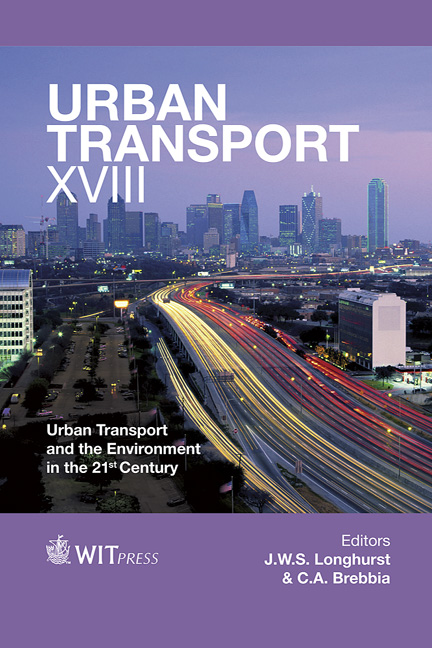A Methodology To Improve A Public Transport System
Price
Free (open access)
Transaction
Volume
128
Pages
9
Page Range
219 - 227
Published
2012
Size
1,963 kb
Paper DOI
10.2495/UT120201
Copyright
WIT Press
Author(s)
G. Salvo, L. Caruso & N. Santoro
Abstract
The quality of pedestrian routes of access to a public transport system (PTS) is an important aspect for the choice of transport mode, which can be evaluated using some indicators such as accessibility, comfort, frequency, etc. The policies for urban sustainable mobility must reflect the design and management of mass transit systems, but also the judgment of users in terms of quality and perception of PTS. The purpose is to reassess slow mobility encouraging the intermodal mobility between pedestrian and public transport. Walking can be considered as an alternative mode of urban transport and a moment of a break from the chaos of modern life. Its role should be considered as an important element for a new model of structuring the city. Using geomatics a methodology for the assessment of accessibility to the PTS has been developed, that takes into account the quality of a pedestrian path to reach the bus stop. The distance between bus-stops, human energy expended to reach the stops of the PTS, etc, are some elements analyzed in this study. The qualitative and quantitative data of the pedestrian network access have been managed in a Geographic Information System (GIS), proving a valuable tool that can handle a large amount of spatial and heterogeneous data. The results can be of support both at the planning/strategic level that also helps the users, if inserted in the context of a Web-GIS, making the integration between pedestrian mobility and PTS competitive. Keywords: public transport system, pedestrian mobility, geomatics.
Keywords
public transport system, pedestrian mobility, geomatics.





